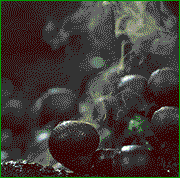|
Hey it's page 420. Here's some photos of my afghani hydrangeas   
|
|
|
|

|
| # ? May 30, 2024 09:42 |
|
Sludge Tank posted:Hey it's page 420. Here's some photos of my afghani hydrangeas lol, loving finally. And....wait a sec, talk about a top tier Page 421 snipe
|
|
|
|
Sludge Tank posted:Hey it's page 420. Here's some photos of my afghani hydrangeas So pretty I can’t wait until it’s legal to grow in my state
|
|
|
|
They really are strikingly pretty plants
|
|
|
|
Someday I gotta try growing pot. I don't smoke it or do anything fun but it'd be neat to grow it as an ornamental. It sure looks beautiful enough to be one.
|
|
|
|
I really dont smoke either. I would loving love to but it just smashes my anxiety/paranoia button. I really just love growinh it for ornamental value, and all the different strains have such unique beautiful smells. Some smell like garlic, others like mango, some like diesel, some like orange or cheese or some indescribable smells. Its pretty amazing how diverse it can be. Even for non stoners its still a fantastic plant to grow. And easy.
|
|
|
|
Chard posted:jet stream is a helluva drug Yeah it’s ridiculous really how not-cold the UK climate is. Barely ever even get hard frosts, can plant bare-root trees in January & February. Don’t worry, we still get the same lack of sunlight for half the year that you’d get in Canada. And if the jet stream changes... the Thames used to freeze solid regularly in Victorian times. Sludge Tank posted:Even for non stoners its still a fantastic plant to grow. And easy. And it was primarily cultivated for rope making for much of its history in the west at least. There must’ve been huge fields of it in the south west UK at some point, as they made the entire UKs rope.
|
|
|
|
wooger posted:And it was primarily cultivated for rope making for much of its history in the west at least. was the fiber being produced in the UK though? Or was it being grown elsewhere (like one of the colonies) and turned into rope after being imported? the northeastern United States were the center of American textile and garment making throughout the 18th, 19th, and early 20th centuries, but the cotton was always being grown elsewhere-first in the American south and later on abroad.
|
|
|
|
Ok Comboomer posted:was the fiber being produced in the UK though? Or was it being grown elsewhere (like one of the colonies) and turned into rope after being imported? Just found this: It was illegal *not* to grow it. https://biosante.co.uk/history-of-hemp-in-the-uk-the-uks-history/ quote:Henry VIII in 1533 was the first reigning monarch to impose a penalty for farmers who did not grow hemp on their land. This was sustained by a later monarch, Queen Elizabeth, whom in 1563 famously decreed that for every 60 acres of land, farmers must provide at least one acre of land for growing hemp. This emphasises the importance of this crop to the nation.
|
|
|
|
wooger posted:Just found this: It was illegal *not* to grow it. lol...Weedshire
|
|
|
|
Hexigrammus posted:Might be worth looking into Haskaps as well since they seem to be the botanical equivalent to a cockroach. (Just musing here, I have no idea if these would work. I have to start moving some Haskel suckers before they take over that end of the garden and I might try planting some deeper in the woods to see how they do.) I need to propagate some of mine, obviously the non‐patented varieties.  From everything I hear, they’re very eager to root.
|
|
|
|
guri posted:I've gotten it to successfully germinate once and I wish I could remember specifically what I did to make that happen. I've tried various seed packs from Japan in recent years and haven't had success again. That reminds me that I should make my annual attempt again.. Red shiso would outcompete just about anything in my garden except maybe creeping fig. It comes back every year and if I don't pull it, it crowds most stuff out. I also grew a Korean shiso that has light green leaves, but I didn't have as many seeds to start. Turned out to be a good thing because the aroma was really off-putting to me. It's not as prolific as the red stuff, but I still see it popping up in a few places in my yard. All of which is to say that despite its apparent geographic origin in northeast Asia, it grows quite well from seed in hot and humid SE Louisiana.
|
|
|
|
Chard posted:is shiso supposed to be really hard to germinate? soaking the last third of this seed packet now for a final attempt after coming up with nothing on the last ~25 seeds/two batches I got one packet of seeds a couple of years ago. The first time, while it was fresh, I direct sowed a bunch and had basically 90% germination rate. I ended up with so much shiso I had to give it away. The following year, I tried direct sowing and got all of one plant to germinate... I haven't even tried it this year, maybe I should, but my anecdotal data is that the seeds might be very short lived? E: quote:When cultivating perilla, its downfall is its limited seed viability in storage, so store seeds at lower temperatures and humidity to improve the storage life and plant before they are a year old. Seeds for perilla plants can be sown as soon as possible in the spring and will self pollinate. It's not just me, apparently. Maybe the seeds you got were a bit old? Jan fucked around with this message at 19:50 on Apr 18, 2021 |
|
|
|
Would this be where I'd ask about Composting? We're gonna get one of those rotating compost drums, and im reading various things. The only negatives these things list for putting animal products in is " odor and pests". The drums are sealed, and won't really be near anyone. Are there other, unlisted, negatives?
|
|
|
|
Johnny Aztec posted:Are there other, unlisted, negatives? Yes, it's unlikely you will get that compost hot enough for long enough to reliably kill any pathogens that can end up in your food crops. So don't use that for a garden.
|
|
|
|
But flowers and such would be fine? and by "animal products", I mean table/cooking scraps. Meat, fat, etc. Not like....poop.
|
|
|
|
Yeah. Meat and fat are not great in a home compost because they attract pests and it doesn’t get hot enough to compost properly. It will still carry microbes into your flower garden that you don’t need to be around and it’ll attract mice and rats and raccoons and whatever other pests you can think of in your area. They’ll come for the compost smells and stay to dig around your yard. Vegetable scraps are perfect for it and are fine for putting in your gardens. These don’t have issues with microbes and rotting poorly like animal products do. If they’re fully composted they make great additions around flowers and vegetables.
|
|
|
|
Alrighty, Appreciate the information. That's why I like coming and asking in these threads. In exchange, have a webcomic about composting:
|
|
|
|
Anyone have any strong opinions on irrigation systems?
|
|
|
|
I live in zone six and we have a chance for snow tomorrow. Do I need to cover my peas, tomatoes, or peppers? Onions, garlic, carrots, shallots should all be fine for a freeze and raspberries and apples too.
|
|
|
|
Earth posted:I live in zone six and we have a chance for snow tomorrow. Do I need to cover my peas, tomatoes, or peppers? Onions, garlic, carrots, shallots should all be fine for a freeze and raspberries and apples too. tomatoes and peppers for sure. It might serve you well to add some kind of thermal mass to the peppers especially (like set jugs of water next to or between them to soak up sunlight and keep them warmer longer through the cold). If I were out there covering stuff already I'd probably throw a blanket on the peas if it were convenient. I don't really panic about my peas and cold snaps as much as I do peppers and tomatoes.
|
|
|
|
Probably no snow here in zone 5b, but some rain and some nights are barely above freezing, still too early to put stuff out?
|
|
|
|
CommonShore posted:Anyone have any strong opinions on irrigation systems? Like drip irrigation or greenhouse irrigation or some other kind of mystery irrigation?
|
|
|
|
GreenBuckanneer posted:Probably no snow here in zone 5b, but some rain and some nights are barely above freezing, still too early to put stuff out? It really depends on what it is. Tomatoes, peppers, eggplant, and all those other plants that really love hot weather do not like frost. Peas? Probably don't care that much. Check your location in a farmer's almanac and see what the schedule is. It varies for all the different plants for about a month. 5b though you're looking at mid-May for tomatoes and peppers at the earliest, and possibly Memorial Day. Peas are probably beginning of April though? So take a look at the almanac calendars and find out what's historically worked for your area. Basically, don't plant like you're in zone 8/9 if you're in zone 4/5. It only ends in tears, but I'm fully sympathetic to wanting to just go plant something. Instead you could prep your soil and amend with compost if the ground is thawed. It might be warm enough to start hardening plants during the day if you started your own seeds.
|
|
|
|
Wallet posted:Like drip irrigation or greenhouse irrigation or some other kind of mystery irrigation? Some kind of irrigation for an in-ground planted greenhouse, which should be arriving this week and I'll set it up not long afterwards. I'm just starting the process of researching this now and thinking about my options. I'm looking at drip lines and soaker hoses and pricing stuff now. This actually all looks quite affordable! I've been looking at irrigationdirect.ca. I'm planning to set up my greenhouse with 4 beds, 60 feet long. I think that I'd rather run ground-level watering instead of sprinklers. My water source is a rain-fed cistern with a regular electric pump, and I'm contemplating a water barrel holding system (on a 3-4 foot stand for pressure) closer to the actual greenhouse so that if the cistern ends up empty I can pump water over from my well. Because the water is coming from the cistern, I'm looking into various non-clogging emitters. Goons tend to have strong opinions about The Best Ways to do things or at the very least The Worst Ways to do things, so I might as well ask and find out those things a week before I actually order something instead of posting about it and having someone call me a jackass. CommonShore fucked around with this message at 17:37 on Apr 19, 2021 |
|
|
|
Johnny Aztec posted:Would this be where I'd ask about Composting? Those spinning drums are real bad. Too small for effective composting I think. You need volume if you actually want to make compost well. And you need air for the composting process to work too - a sealed drum sounds bad for that. But you might want two systems: one to get rid of the animal food waste, snd one to actually make compost with the pest issues. For cooked food waste & meat you want something with a strong mesh base, and embedded into the ground by at least a foot, and with vents at the top. Just chuck the food waste in and leave it. Don’t expect to get anything out of it, but do expect to get better soil around it and lots of happy worms. They can be moved every few years. This is a commercial version, but you can just use a big section of plastic pipe (8 inch + diameter)with one end embedded deep into the ground. https://www.greatgreensystems.com/shop/green-cone-waste-digester Or just save it up for a while & bury the waste deep under a bed before planting. Or look into Bokashi composting. Then for a “normal” compost pile, you really want something at least 1 metre square (1.3 yards) so that it gets up enough heat to make compost in a reasonable time. You can just have a big heap, or you can make big bins out of wood, but that size is important - bigger is better. They need to be turned every so often, so people with lots of compostable waste & space often go for multiple bays this size next to each other, to make this convenient. wooger fucked around with this message at 18:55 on Apr 19, 2021 |
|
|
|
CommonShore posted:Some kind of irrigation for an in-ground planted greenhouse, which should be arriving this week and I'll set it up not long afterwards. I'm just starting the process of researching this now and thinking about my options. I'm looking at drip lines and soaker hoses and pricing stuff now. This actually all looks quite affordable! I've been looking at irrigationdirect.ca. For what you're talking about drip irrigation sounds pretty reasonable to me  and will be a lot more efficient than sprinklers (though you may not care that much if you aren't paying for water). As far as clogging goes even if you're going to use clog-resistant emitters it's generally a good idea to have a filter and that probably goes double if it's cistern fed (both because of sediment and because of algae). and will be a lot more efficient than sprinklers (though you may not care that much if you aren't paying for water). As far as clogging goes even if you're going to use clog-resistant emitters it's generally a good idea to have a filter and that probably goes double if it's cistern fed (both because of sediment and because of algae).
Wallet fucked around with this message at 20:15 on Apr 19, 2021 |
|
|
|
Wallet posted:I think these days people mostly go with overhead misting/spraying when they're growing seedlings or doing a ton of propagation and they want to keep stuff consistently moist to control transpiration. Filtering is one of the other reasons I'm thinking about having a barrel reservoir closer to the site - that way I can let sediment settle and run it through some simple fabric filters to catch bits. That will cost me some water pressure, though. I do care about water use, because I'm trying to learn how to set up efficient systems (and we've been drought-prone in recent years, so I'd prefer to stretch out my reserves) Right now I'm boning up on the finer points of soaker hose vs drip line vs drip tape to make some informed decisions.
|
|
|
|
CommonShore posted:Filtering is one of the other reasons I'm thinking about having a barrel reservoir closer to the site - that way I can let sediment settle and run it through some simple fabric filters to catch bits. That will cost me some water pressure, though. I do care about water use, because I'm trying to learn how to set up efficient systems (and we've been drought-prone in recent years, so I'd prefer to stretch out my reserves) Soaker hoses are expensive for how quickly they tend to break. Drip hoses are probably in the same boat. Anything that bends will wear out faster than something rigid. PVC drip systems are going to be longer lasting, and if you set it up right, you can just switch out sections that need it instead of a whole hose. You can also get a big bag of mist spouts and cover areas for greens. Modularity is king in my book and you can increase your utility by being about to cycle things or having secondary reservoirs to add nutrients to your watering. I’m doing one myself this year, but your scale is much bigger than just putting a cheap inline pump onto my rain barrel to push the water into the pipes. I have seen a lot of videos about people who try to store all that water from a rainy season for the desert season and they tend to have a multi-stage process to settle out sediment, so you’re probably on the right track there too.
|
|
|
|
Jhet posted:Soaker hoses are expensive for how quickly they tend to break. Drip hoses are probably in the same boat. Anything that bends will wear out faster than something rigid. I'm still working through the precise vocabulary here - By PVC systems do you mean the ones where you get plain tubes then punch holes and add emitters? I've been leaning that way generally, though I've also been thinking about the benefits of grabbing some drip tape too and connecting that to the same system.
|
|
|
|
CommonShore posted:I'm still working through the precise vocabulary here - Yep, that's what I mean. I've used it in the past for a hydroponic system and it's super easy to set up and manage (with a tube cutter). You could definitely add a soaker hose to the end somewhere, but that doesn't let you recapture extra water at the end (if there is any left). Just grab the schedule 40 pvc and get to work with a drill. If you plant based on where the drip emitters are you'll never have to worry about spacing, but you may have to balance the system by getting the right size pump for your distance. I know some people itt have mentioned doing it by section and having valves in place to help with water pressure.
|
|
|
|
CommonShore posted:Some kind of irrigation for an in-ground planted greenhouse, which should be arriving this week and I'll set it up not long afterwards. I'm just starting the process of researching this now and thinking about my options. I'm looking at drip lines and soaker hoses and pricing stuff now. This actually all looks quite affordable! I've been looking at irrigationdirect.ca. That looks like a good source - I've found it's better to find places catering to professional landscapers as you're less likely to get bitten by someone's proprietary connectors that are almost 1/2" but not quite and definitely aren't metric. A few thoughts: - I don't think non-clogging emitters exist, except maybe in some marketing droid's imagination. Don't cheap out on the filter. Even with our extremely clean water supply it's amazing what finds its way into the system. There's a 3/4" Y filter (150 mesh, $17 cdn) listed that I know works well from personal experience (but on a well, not a cistern). Avoid the little T filter with hose fittings on each end (again, from personal experience). . - The cheap black drip tape is disposable. It's meant to be tilled back into the soil every year or two (or recovered and disposed of if you have a black plastic mulch lifter attachment for your tractor). It won't last long sitting on the surface exposed to the sun. The brown tubing with the pressure compensated emitters molded in is far sturdier and will last years if you protect it from the sun under a layer of mulch or soil. Well worth the extra $$. - Weep tubing / soaker hoses (no holes, water kind of oozes through the wall of the tube) will stop working after half a season. Some people are able to get a couple of years out of it. I've never heard of it lasting for five years and it tends to fail quietly - slowly killing your plants if you aren't paying attention. I do not like it. - Our soil is very sandy, so drip tubing doesn't keep the entire surface of the bed moist. If we're germinating seeds or putting in small transplants that aren't directly over the drip tube we'll run a couple of sprayers or bubblers to the area to allow the seedlings to get their roots down to the watered zone. Nice thing about the brown drip tubing is that you can punch an emitter into it and the emitter will work as normal as long as the system is running at 20+ p.s.i. The emitter can be pulled out later and the hole patched with a goof plug. - 1/2" poly supply tubing is cheap. Running the supply for each bed back to a manifold at the source will give you more flexibility in the future if you find you can only run a couple of beds due to water pressure or have plants with different water demands. To begin with with just T everything off the filter, add valves if you need them later. - Don't be afraid to play around - find out what works. Buy extra straight couplers and goof plugs so you can experiment at will. - If you're going to be punching a lot of emitters into solid tubing get a hollow punch and keep a piece of wire handy to keep it clear. This punch at minimum. I wish I'd sprung for the $25 model to begin with. Sharpened nails and bits of plastic work, but only sort of. -
|
|
|
|
Hexigrammus posted:- 1/2" poly supply tubing is cheap. Running the supply for each bed back to a manifold at the source will give you more flexibility in the future if you find you can only run a couple of beds due to water pressure or have plants with different water demands. To begin with with just T everything off the filter, add valves if you need them later. I hadn't seen this before, but now I'm definitely going to find a source for it south of your border to go on the end of my pvc water supply run. I could buy 100ft and maybe do everything I need twice.
|
|
|
|
CommonShore posted:I'm still working through the precise vocabulary here - SubG posted:Sure. I'll repeat the disclaimer that this is probably overdesign for most people, so this definitely isn't something I think is the One True System or whatever.
|
|
|
|
I had a couple gardens when I lived in Texas and they were the easiest things ever. Now that I'm in Colorado, it's like a unique slice of hell designed just for me, trying to start a garden here. 6" of snow tonight. It was shorts weather a couple days ago.
|
|
|
|
Unrelated to irrigation, I think it was in this thread I talked about experimenting with different methods of saving seed for bitter melons. To recap: I've developed superstitions around the robustness of volunteer bitter melon vines versus the ones I direct sow normally. To test, I saved some seeds "normally" (that is, seeds from a ripe fruit, cleaned and dried and saved in an bag stored indoors with the other saved seeds), saved some "dirty" (seeds from a ripe fruit, intentionally not cleaning the gunk off the seeds), and saved some overripe fruit (just letting them air-dry outside with the seeds still in them). The "dirty" seeds ended up getting tossed because they attracted enormous clouds of gnats or flies or something. Like seriously, I've had random bits of garden veg that managed to hide themselves and rot before I found them and I've never seen anything attract flies like these seeds did. Don't know what's up with that. Anyway, they got tossed. The over-ripe fruit got buried when I mattock'd up the beds at the end of last season--just tossed them in and worked them into the soil more or less intact. So basically a bunch of dried-up bitter melons just randomly sorted into the soil and left to sit over winter. Last week I started direct sowing the stuff that wants to be direct sown--long beans, various spring greens (bok choy, komatsuna, gai lan, and so on) and the "normal" bitter melon seeds. Anyway, a day or two after the beds got their first watering, the "forced volunteer" bitter melons started coming up:  Don't know that this proves anything by itself, just documenting it for posterity.
|
|
|
|
Amazing. Thanks for the good posts all! Pvc it shall be! I might order tonight even
|
|
|
|
CommonShore posted:Amazing. Thanks for the good posts all! Pvc it shall be! I might order tonight even
|
|
|
|
SubG posted:Cool. A couple random caveats/pointers/whatever I'd throw out there, entirely overthinking/over-advising on the whole thing: Thanks - I'll see if I can find one. I'm appreciating all of the help. I'm puttering through that website right now and making lists of things that I want to use. At some points sorting through the different lists of items is making me go crosseyed because there are so many little things with so many little variations on them. I'm fully confident in my ability to build this once I have the right parts in front of me. It's making sure that I'm selecting the right parts from the list that gives me the howling fantods, as I have a history of ordering incompatible parts for like every one of my hobbies. I think that I'm going to buy a mix of the small radius sprinklers for my smaller plants and run the techline 12" stuff for the tomatoes, cucumbers, and other large plants. e. Here's what I'm thinking of getting. Going to sleep on this and order tomorrow: A roll of 17mm Netafim (50 or 100 feet) A roll of plain PVC ½ inch (Big rear end roll because it's so cheap) A smaller roll of PVC ¼ inch (smaller roll for extending emitters and spreading them around if so desired) A bundle of mini sprinklers (enough to cover 120 linear bed feet or so, a mix of bubblers and stakes) A bundle of 1gph drip emitters A filter A pressure regulator Ts Elbows A bunch of straight couplings A bunch of hose end caps A bunch of 1/4 inch barbed connectors A bunch of goof plugs At LEAST 5 in-line valve shut-offs. A hose swivel adaptor A ball valve for the whole system A punch CommonShore fucked around with this message at 03:57 on Apr 20, 2021 |
|
|
|

|
| # ? May 30, 2024 09:42 |
|
Hexigrammus posted:- I don't think non-clogging emitters exist, except maybe in some marketing droid's imagination. Don't cheap out on the filter. Even with our extremely clean water supply it's amazing what finds its way into the system. There's a 3/4" Y filter (150 mesh, $17 cdn) listed that I know works well from personal experience (but on a well, not a cistern). Avoid the little T filter with hose fittings on each end (again, from personal experience). Nothing is really clog‐free, but there are some options to make it less likely or at least less frustrating. The basic option is the “flag dripper”. The eponymous flag is a piece that can be manually pulled out to allow the fine channels to be flushed. These are not great because they have fine channels in the first place. They are laminar flow devices. They rely on friction against the (narrow, long) channel walls to slow the water and make it rain consistently. Toro and Antelco make “take-apart emitters” that have a section that unscrews to, again, allow the innards to be cleaned—or replaced, if they, say, froze and burst over the winter. These are turbulent‐flow devices. They have wider, shorter channels than laminar units and are less liable to clog in the first place. They can still clog, but fixing the occasional clog is a lot less of a hassle without the need to cut and patch tubing. I think they’re worth the premium for personal use even if you don’t anticipate clogging. Bowsmith makes some emitters that they swear are non‐clogging. I’ve never used them because they’re bulky and two to three times as expensive as the competition, and my water is clean anyway, but I would at least trial them if I was getting clogs.  Pressure‐compensating emitters are supposedly less vulnerable to clogging than non‐compensating models because they have a similar thing going on with a membrane internally. Makes sense, but I’ve never tested it. 
|
|
|





























